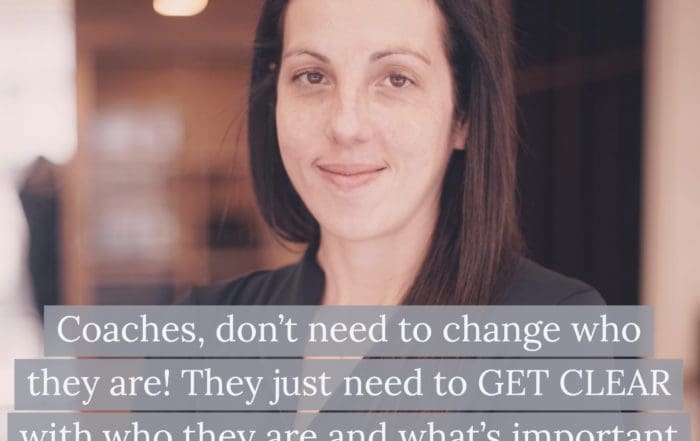Would you ever deliberately choose to do something that would cause pain, torment, or a feeling of being broken? Do you know how to embrace the chaos training throws at you? You hear it all the time in endurance sports, “Why would an athlete choose to put themselves through so much pain?” But it’s that kind of mindset that sets those athletes apart from the rest. They welcome pain, they welcome chaos, because in their minds, without it, they wouldn’t get better, and they wouldn’t be able to foresee events that leave others broken. As mental skills coaches, we could not agree more. Here are a couple of strategies to help you through those adverse times. Things get shaken up whether you want them to or not, and these techniques will be there as your sword and shield as you embrace the chaos.
The Shakeup

So a couple of weeks ago, I was at a yoga. Yoga and Sports go hand-in-hand. At the beginning of class, the instructor, a lady in her upper 20s, started to talk about the intention we might want to set for class. Whether that be to enhance your present moment focus – by focusing on your breathing – or boosting your confidence – by thinking about how far you’ve come since a year ago. Your intention is whatever you want to think about throughout the class or what you want to work on.
That day, my instructor talked about how in life, sometimes things get shaken up. She said that sometimes they NEED to get shaken up, so that the pieces can fall exactly where they need to be. She talked about how some crazy stuff happened in her life about five years ago and now she’s shaking things up again.
What I found the most interesting is that she said, “Sometimes you need to shake things up and sometimes, things get shaken up on their own.” I thought about this a lot and it relates back to sport performance and of course, life.
EMBRACE THE CHAOS
Embrace the constant changes that are going on and enjoy them. Maybe shake things up on your own. You don’t need to wait for an outside force to shake things up for you. Most of all, if events in your life seem a bit too dull, just go for it.
Try new things.
Alter something.
Do. Something. Different.
When exercising, in order to continue building muscle strength or endurance, you have to shake things up. In judo, to advance in the sport, new grabs, jabs, and moves need to be tried, practiced, and mastered. In any field, if new and creative ideas aren’t tried out, the world would not continue to advance. So shake things up, and embrace the chaos.

The Snow Globe
When you pick up a snow globe, what’s the first thing you do with it?
Shake it.
And why do we shake it up? It’s because that is the reason for it, and the most beautiful part of the snow globe is when the snowflakes are floating around in a frenzy. We pick it up, we shake it, we watch the snowflakes settle, and then we repeat the process. Over and over and over and over. Sports, jobs, and life are like snow globes.
Learn From The CHAOS
Ray Lewis, one of the greatest linebackers in the history of the NFL, would continuously shake things up. He said that every practice, he would try something new. That he always wanted to be one step ahead of the other team, and the only way he could do that, was if he was doing stuff that they didn’t see coming. He would study their tapes, plays, and formations, and then try new things in practice to help prepare against those teams.
If they didn’t work, he wouldn’t get mad, he would just learn. He wasn’t ever a loser.
The only time you become a loser, is when you decide to stop learning.
Ray Lewis embraced the chaos of football and made sense of it. He continually learned from his mistakes and adversities. Ray was, and still is, an avid learner. Along with his pregame ritual which included breathing techniques (click here for more on “the breath”) and visualization, he became an amazing football player.
Furthermore, it’s hard to embrace the chaos though and we all struggle. Some days we wake up, and we don’t want to put ourselves through the ringer again. Trying new things is hard and we might feel clumsy at first. We might make mistakes and there might be a little voice in the back of our head telling us, “Just quit. You’re not going to make it. You aren’t good enough.” That chaotic environment inside our own brain can be rough at times and learning how to embrace it and control it is essential. So how do you control it?
How to Embrace the CHAOS (Part 1): Journal!
One of the many tools in a mental conditioning coach’s toolbox, is the journal. We have the athletes we work with use a journal to record their thoughts after competitions. What went well, what didn’t. What they need to work on. It’s called the “Well Better How” activity and it’s just three simple questions you ask yourself:
- What are three things that went well?
- What is one thing I wanted to go better?
- How can I do something differently next time to make that one thing go better? (process based)
Golfers use this technique incessantly. Phil Mickelson, a golfer and winner of five major championships, writes down everything about his game. He knows how far his 6 iron is going to hit the ball in deep rough, short rough, off the fairway, when it’s 82 degrees out, when it’s 62 degrees out, when he’s at sea level or 5000 feet above it, and even when there’s a light dew on the ground (for those early morning rounds). He wouldn’t know this if he or some outside force didn’t continually shake things up.
How to Embrace the Chaos (Part 2): Deliberate Breathing
The breath instantly puts you in the moment. As soon as you begin to concentrate on the wind flowing through your body, the present moment has encapsulated your mind. The importance on the breath comes from this. Using deliberate breathing can pump you up, calm you down, and ultimately, FOCUS YOUR MIND. If used incorrectly, it can frustrate you, worry you, and maybe cause you to panic. Sometimes, we don’t learn things until they happen to us, but lets all make a mental note of this triathlete’s story.
Training
Running an annual marathon and triathlon are the norm for this athlete. Every year, mid-spring, he would participate in a marathon, and then at the end of the fall, swim/cycle/run a triathlon. It was in Texas, so the weather was basically perfect for both.
Then one year, he decided to participate in a triathlon up north, right outside of Chicago. The water was much colder up there, and a wetsuit was required. In preparation for the triathlon, he decided he would compete in a sprint-tri: 750m swim, 20km bike, 5 km run. He trained as he always had, swimming at the YMCA near his house, cycling along the frontage road, and running in the forest preserve.
As the sprint triathlon approached, he knew he had to try out his new wetsuit. As a result of past experiences, he knew to NEVER try anything new come race day. So he threw his wetsuit in his truck and headed over to the local watering hole for an open water swim.
The Swim
He slipped into his wetsuit and to go out and back across the lake (about 1000m). Oh, and by “slipped in”, I mean took 10 minutes to pull each part on. Bunching and unbunching, pulling and tugging, zipping and unzipping.
Finally, it was time to go. He jumped off the dock and headed out. Almost 150m in he noticed something different. He felt like he couldn’t breathe and he couldn’t touch bottom. His lungs seemed like they were giving out on him, he could hear his heart in his head, and before he knew it, he was having a full on panic attack. Talk about shaking things up.
As he climbed onto to the dock, using up every ounce of adrenaline he had in him, he unzipped and collapsed in exhaustion. Mentally fatigued he laid there until he was comfortable getting up. He decided to call it quits for the day and went home. “We’ll try again tomorrow,” is what he told himself.
The Problem
For the next week, he dreaded swimming. Every time he put on his suit and started to swim, he instantly felt the surge of anxiety take over his body and mind. He didn’t know what to do. Competing in endurance sports was his way of life and he already committed to the triathlon up north with his brother and niece. He needed to learn to embrace the chaos. So he went online and found himself a mental conditioning specialist.
The Session
After the initial session, the mental conditioning coach gave him some homework. Over the next 7 days, during his running and cycling, he wanted him to concentrate solely on his breathing.
4 steps of breathing in.
5 steps of breathing out.
6 pedals in.
6 pedals out.
Whatever he was comfortable with.
The coach just wanted him to better understand his breathing patterns.
The Journal
The next week, him and his new coach took on the dock. Before he hopped in the water, they went over his “Well Better How” journal and found that he became more comfortable throughout the week with his breathing pattern recognition. He was amazed with what just one week of concentrating on his breath could do for him. At the beginning of the week, he wrote, “Breathing felt weird and I couldn’t figure out the best cadence.” In contrast, the day before they met up he wrote, “Breathing went well today. I found myself losing track of breathing and of my own reality for minutes at a time. I focused on my breathing and the next thing I knew, I was 3 miles down the road.”
The Solution
Finally, he slipped into the calm lake, confident he would be able to embrace the chaos yet to come. 100m into his swim, he felt that surge of adrenaline that was all too much for him 8 days before. He flipped over to backstroke, looked up, and could feel his lungs constricting.
This time though, instead of freaking out, he saw himself on the asphalt with a calm breath and relaxed demeanor. As he lifted his arm, he took a breath in, and found his new cadence. He pushed forth, revitalized. As a result of his training, he realized how deliberate breathing could help him, but he found another level of confidence in his endurance training. His training was shaken up, but due to his journaling and deliberate breathing, he learned to embrace the chaos.
If you’re looking for a specific breathing technique, check this one out in Back to Basics.
We All Start Somewhere

Although you might not know all this information about yourself yet, it’s the 3-step process of journaling that will get you there. And you won’t get there unless you shake things up yourself. If you’re a tri-athlete, ride in the morning, do sprints, do hills, do intervals, or lower the pressure in your tires some days. Try similar things with swimming and running, and make sure not to try new equipment on race day!
How does your body react at 5am compared to 5pm? What if you eat an hour before your workout compared to 15 minutes before? When are your optimal conditions? What’s going to happen next time that voice in your head tells you to slow down? What are you going to do to put it in check and break through that wall? Phil knows himself in almost every situation, and if he is in a new situation, he takes note of what happens so that next time, it’s not as chaotic.
So shake things up, embrace the chaos, embrace the changes, and give journaling a go. Before you know it, the snowflakes will settle and you’ll be sitting in the sunlight looking out over the beautiful scene that is your life.
We’re Here for You
Need help with getting your chaotic environment under control or pushing through the mental block you have? Does it feel like your snow globe is always being shaken and you feel out of control? We’re here to help with that. Chat us up, sign up for an intro lesson with one of us, and let’s build your mental grit.






